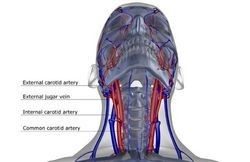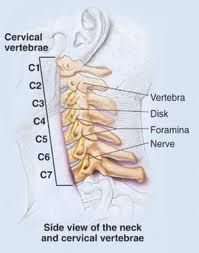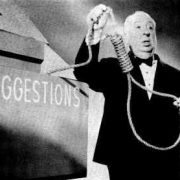Hangings and Strangulations: The Good, the Bad, and the Ugly of it All
Hangings have been a staple in mysteries for as long as we can remember. The Wild West featured them at high noon. The United States government used them as a means of execution, the last being a fellow from the state of Delaware named Bill Bailey, which finally answers the never-ending question. He’s not coming home, so feel free to stop singing about him.
Dr. John Lofland, Professor of Sociology Emeritus Department of Sociology University of California, Davis, detailed state executions in his original commentary titled, The Dramaturgy of State Executions. He’s an expert on the subject.

Dr. John Lofland is an expert on the subject of executions. He’s also a renowned American sociologist and professor who’s best and widely known for his studies of the peace movement. He’s also a multi-published author (see below), and I have close ties to him because, well, he’s my cousin and, ironically, I sort of loosely stumbled onto his path having witnessed an execution by electrocution/electric chair.
I’ve used bits and pieces of information from Dr. Lofland’s commentary to assist you with understanding hangings and strangulations, the topic of this post.
The History
Hangings got their start in Persia (now Iran) approximately 2,500 years ago. So it’s use as a method of putting the condemned to death is not new. American settlers brought the practice with them from England and continued it’s use to deter bad people from doing bad things, such as murder and rape. Sodomy, practicing witchcraft (or even being suspected of it), and even canceling the birth of a child, such as one born out of wedlock, were also “hanging offenses.”
Hangings “back in the day” were sometimes festive occasions where hundreds and sometimes thousands of people gathered to join the celebration of putting a criminal to death. In 1860, for example, a hanging on New York’s Bedloe’s Island attracted massive crowds of people in the streets. So many that others opted to arrive by boat, including oyster boats, yachts, and large steamers carrying such a large number of people it was thought the ships might sink. Food venders set up tents in the streets. It was the hoedown of all hoedowns, and the tradition continued on for a number of years.
It wasn’t uncommon to hears loud and happy cheers while the condemned person dangled from the rope while kicking their feet and convulsing. The cheers grew even louder when the executioner cut the rope to allow the newly dead to drop to the ground.
At one point in time, it was customary for the executioner to cut off the heads of traitors (post hanging) and then hold them up for the crowd to see.
Sometimes sheriffs cut the hanging rope into small pieces and sold them as souvenirs. If the dying man wasn’t dying fast enough, someone would pull down on his legs to help make for a speedier death.
Condemned men have displayed various reactions when finally arriving at the point of their hangings, such as attempting to dance around the trap door, quickly straddle the opening as the door opened, kicking the executioner, etc. Others, having come to terms with their demise, embraced the moment by gently kissing the rope, delivered a flowery speech, or released a black handkerchief, allowing it float gently to the gallows floor, the symbol to drop the hatch.
Writing a Hanging or Strangulation Scene
Most writers who’ve penned death by rope or other “twisted” cord have never seen a victim of strangulation, or hanging (sometimes they’re the same). And that, of course, makes the task a little more difficult, having to rely on books, TV, film, and the word of experts. So before we look at an actual photo straight from the morgue (I snapped the image), let’s take a moment to discuss why and how something as small as a shoelace has the ability to end a human life.
 While looking firm and sturdy perched on a set of nicely toned shoulders, the neck is actually quite vulnerable to life-threatening injury.
While looking firm and sturdy perched on a set of nicely toned shoulders, the neck is actually quite vulnerable to life-threatening injury.
 After all, there’s a lot of important stuff packed into a fairly small space—spinal cord, airway, and major blood vessels. And there’s not a lot of protection surrounding those vital body parts. There’s no bony encasement, such as our ribs, that circle around the interior of the neck. Nope, it’s basically just a little muscle and skin that separates the spinal cord, airway, and major blood vessels from harm.
After all, there’s a lot of important stuff packed into a fairly small space—spinal cord, airway, and major blood vessels. And there’s not a lot of protection surrounding those vital body parts. There’s no bony encasement, such as our ribs, that circle around the interior of the neck. Nope, it’s basically just a little muscle and skin that separates the spinal cord, airway, and major blood vessels from harm.
Did you know that hanging is actually a form of strangulation? Well, sometimes hangings may include some spinal cord or bone injury, but basically the death is by strangulation.
 Hangings are either complete (the entire weight of the body is suspended by the neck), or incomplete, where a portion of the body is touching the ground/floor.
Hangings are either complete (the entire weight of the body is suspended by the neck), or incomplete, where a portion of the body is touching the ground/floor.
A judicial hanging (execution) is normally a death by internal decapitation, where the weight of the body combined with the fall causes the neck to break, disconnecting the head (internally) from the body.
A separation at C2 is the classic hangman fracture.
Rarely, as I’ve often read in novels, does a complete, external decapitation occur. However, it is possible to see an external decapitation (the head completely separates from the body—two individual pieces) in cases where the drop is much further than the length of the victim’s body. For example, the victim is 6-feet tall and is dropped from a height of 30 feet or more before the rope tightens.
 The muscles of the neck, such as the sternocleidomastoid muscle, remain intact during an incomplete decapitation.
The muscles of the neck, such as the sternocleidomastoid muscle, remain intact during an incomplete decapitation.
Strangulation by ligature, tool, or mechanism is a little different, however. Death in these instances is normally caused by obstruction of blood flow to the brain, which causes loss of consciousness followed by a loss of muscle tone and finally arterial and airway obstruction. Naturally, other things occur during the time of strangulation, but those listed are probably of the most concern for writers.
However, pressure applied to the neck for mere moments doesn’t always cause death. Martial arts strangle/choke holds often involve a compression of the major neck arteries, causing a temporary unconsciousness. The trachea (windpipe) is not compromised during the application of these techniques.
 This post-autopsy photo below (note the stitching of the “Y” incision) shows a deep ligature mark on the neck (upper left).
This post-autopsy photo below (note the stitching of the “Y” incision) shows a deep ligature mark on the neck (upper left).
The murder weapon was an extension cord, the typical cord found in many homes.
T o help orient – the head is to the left, just outside the upper edge of the photo. The Y-stitching begins at the bottom left (upper right shoulder area) and continues to the mid chest area where it’s met by a like incision that began at the upper left shoulder area (upper area of the image) and continued to the chest center. The incision continued down to the area below the navel (bypassing the bellybutton).
o help orient – the head is to the left, just outside the upper edge of the photo. The Y-stitching begins at the bottom left (upper right shoulder area) and continues to the mid chest area where it’s met by a like incision that began at the upper left shoulder area (upper area of the image) and continued to the chest center. The incision continued down to the area below the navel (bypassing the bellybutton).
This post-autopsy photo (note the stitching of the “Y” incision) shows a deep ligature mark on the neck (upper left).
The above image is not of the mysterious Bill Bailey. No, he’s still missing. Perhaps “Frankie and Johnny” know of his whereabouts. Ah, how many of you know what the heck I’m referring to in this half-baked riddle?
*This particular autopsy was conducted in the state of Ohio, where procedure may vary from the area where your story is set.
Suicidal Hangings
As a police detective, I’ve seen a few suicides and suicide attempts. They’re not a pretty sight, and there’s a different and noticeable “feel” at those scenes than what’s experienced when stepping into a location where someone was murdered. They’re both emotional, nearly palpable experiences. But suicides … there’s the intense sensation of the misery, sorrow, sadness, and extreme loneliness—what the victim was going through at the time they ended their time on this planet. For a moment, a brief flutter deep in the gut, you sometimes feel as if you’re standing there in their shoes.
It’s especially bad when the suicide is that of a child. Here’s post where I describe one of those scenes. It was a tough one.
Unlike state executions where death is practically instant due to the breaking of the neck as a result of the sudden fall, suicide hangings typically take approximately 8-10 minutes before the deed is all said and done, and the death is typically caused by asphyxiation due to compression of the airway and major blood vessels of neck (see image above).
Should the victim change their mind and halt the process mid-act, or if they’re rescued by someone, here’s what they could expect to happen to their bodies immediately thereafter.
- Respiratory distress
- Pulmonary edema (fluid in the lungs)
- Convulsions
- Elevated intra cranial pressure
- Unconsciousness
Post hanging attempts require adequate oxygenation and restoration of an adequate blood flow to the brain (hyperventilation sometimes helps the process).
Tracheal intubation and/or mechanical ventilation are often needed to maintain oxygen supply. Patients may require aggressive oxygen therapy and must be monitored closely because pulmonary edema could occur even after few hours following the suicide attempt. Merely because they’ve started breathing on their own and appear to be “coming around” does not mean that all is well. Nor does it mean the victim(s) in your stories are completely out of the woods at that point.
Hey, when you need that touch of added tension to “breathe life” into an otherwise somewhat dull scene, well, here you go …
 Dr. John Lofland is the author and coauthor of various works detailing social movements, social psychology, and research methods. Some of his writings include, Symbolic Sit-ins, Doing Social Life Deviance and Identity, Analyzing Social Settings, and Protest: Studies of Collective Behaviour and Social Movements.
Dr. John Lofland is the author and coauthor of various works detailing social movements, social psychology, and research methods. Some of his writings include, Symbolic Sit-ins, Doing Social Life Deviance and Identity, Analyzing Social Settings, and Protest: Studies of Collective Behaviour and Social Movements.
According to Wikipedia and a bit of our family history, John’s book, Doomsday Cult, “is considered to be one of the most important and widely cited studies of the process of religious conversion, and one of the first modern sociological studies of a new religious movement.”
Dr. John Lofland and I both are related to another Dr. John Lofland.
The early Dr. Lofland was the first official poet for the State of Delaware and authored The Poetical and Prose Writings of Dr. John Lofland, the Milford Bard. I have a copy.


In 1830 John Lofland accepted a challenge from Edgar Allan Poe at the Stars and Stripes Tavern on Water St. in Baltimore Md. The challenge was to see which of the two could write the greater number of verses. Poe lost to Lofland in the marathon contest and was obligated to pay for dinner and drinks for his good friend. This is proof a Lofland received the first ever Edgar Award, dinner and drinks from Poe himself!
Thoughts
by Dr. John Lofland, The Milford Bard
Oh! Liberty, how lovely are thy charms,
Thus to call forth embattling bands to arms!
T’ avenge his country’s wrongs, her rights to save,
To win a glorious garland, or a grave;
To rend the chains of cheerless slavery,
To give unborn millions liberty;
To dash the sceptre from the despot’s hand,
Heroes have nobly bled, and patriots plann’d…
Oh! War, what horrors follow in thy train,
What scenes of grief, of dark despair and pain?
Methinks I see the dying and the dead,
Adown this hill, upon their grassy bed;
I hear the cry of wounded men, in vain,
Calling on wives and children, o’er the main;
Calling on wives and children, they no more
Shall see on life’s now fast receding shore;
I see forms of those who died, that we
Might live and long enjoy liberty.














How long will the ligature marks remain, assuming someone was rescued or had second thoughts in a suicide? There was a television show back in the day with a protagonist who bore the marks permanently.